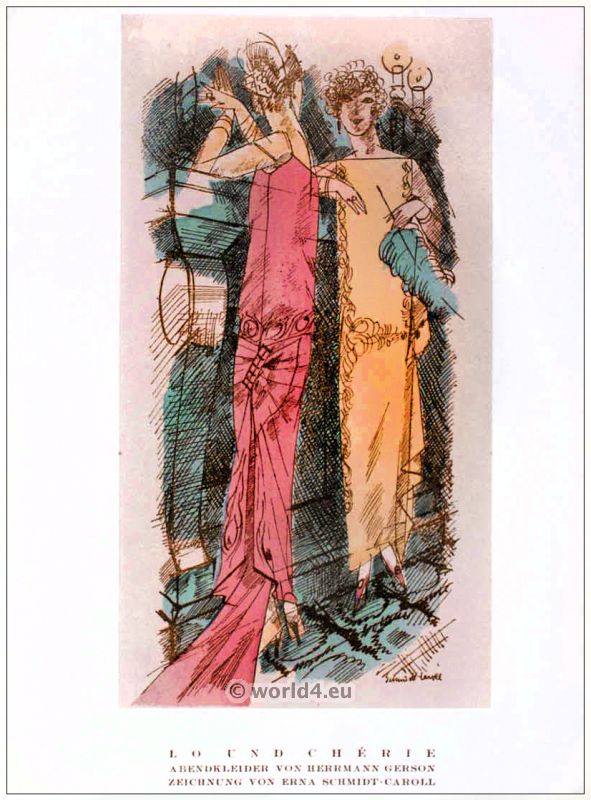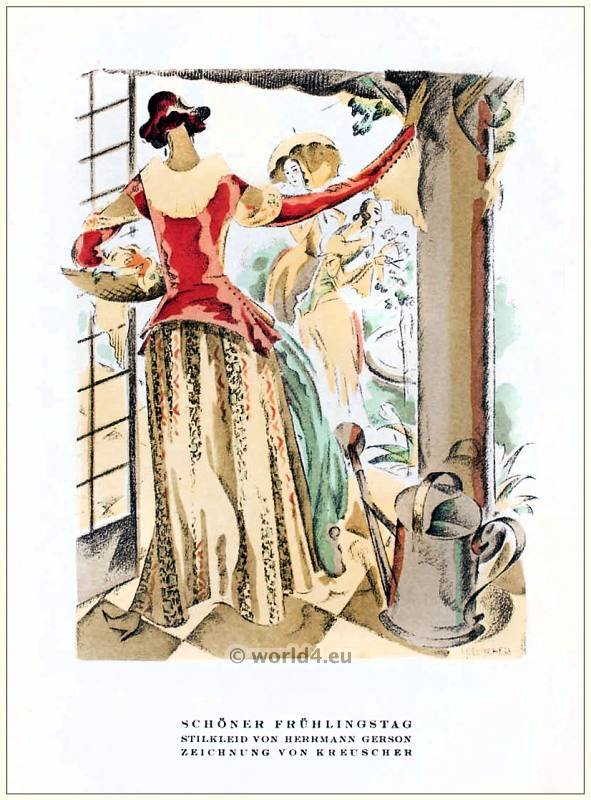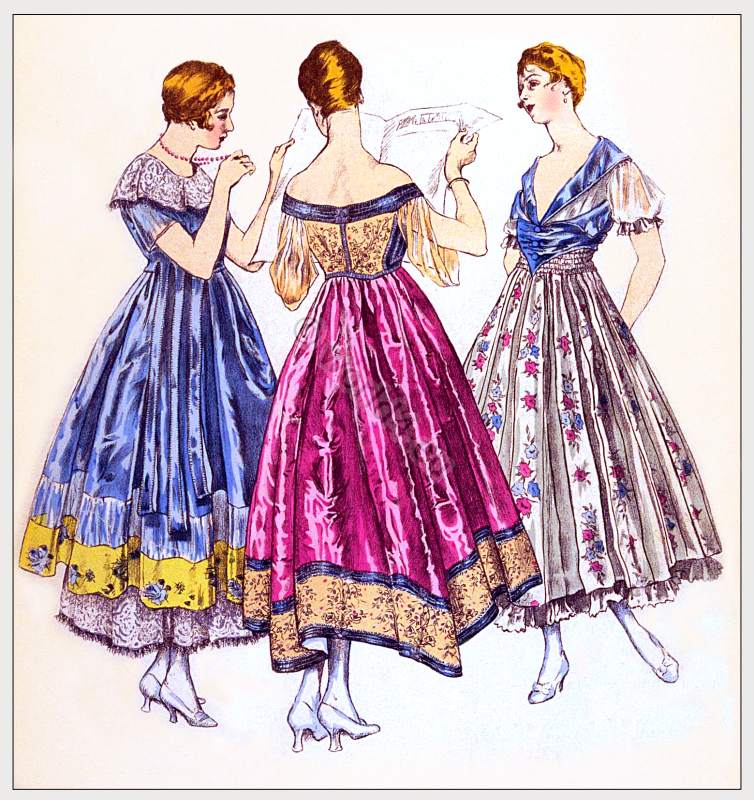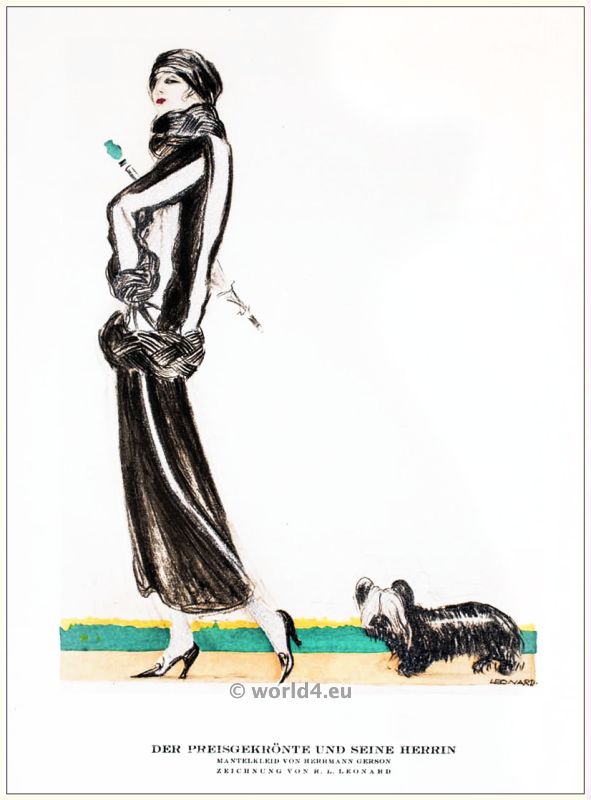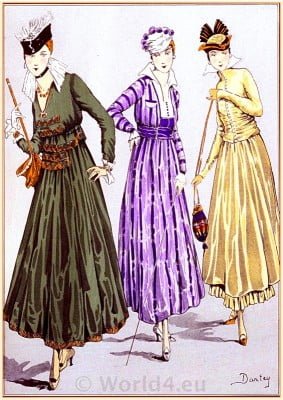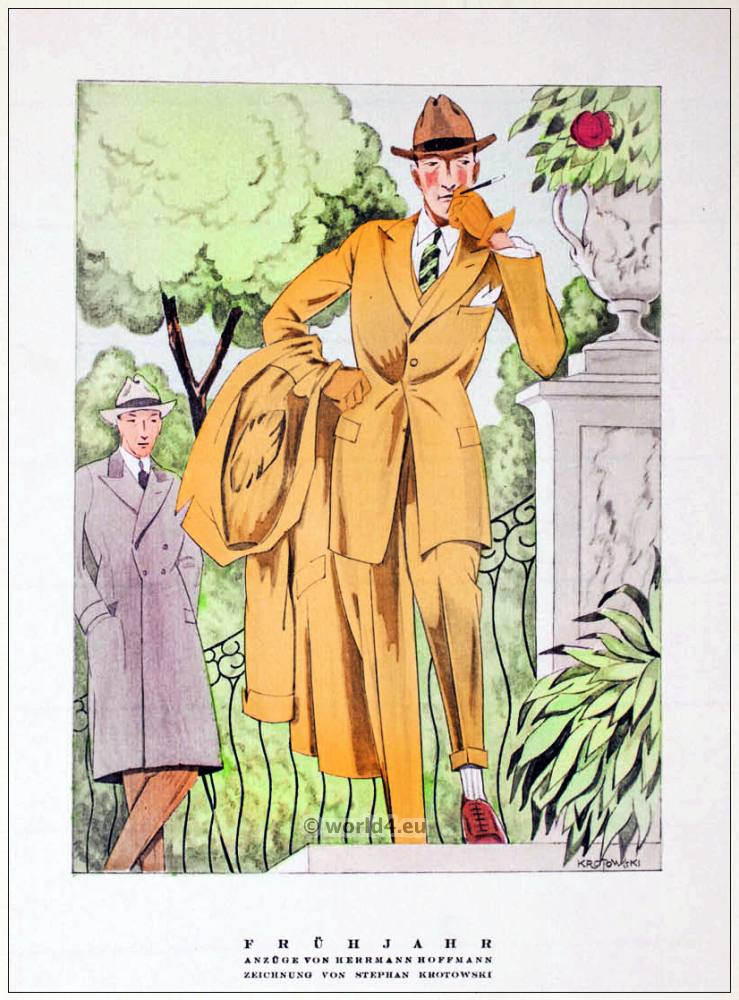Lo and Chérie. Evening Dresses by Herrmann Gerson.
Drawing by Erna Schmidt-Caroll. Styl, table 3, Issue 5/6.
Orig.: Lo und Chérie. Abendkleider von Herrmann Gerson. Zeichnung von Erna Schmidt-Caroll. Styl, Tafel 3, Heft 5/6. STYL – von Ludwig Sternaux (Blätter für Mode und die angenehmen Dinge des Lebens). Publiziert in Berlin von Erich Reiss & Otto v. Holten in 1922 & 1923.
Herrmann Gerson (1813-1861) was a Berlin Jewish fashion designer and operator of one of the leading fashion stores in Berlin. The store was known for its women’s fashion and as a purveyor supplied the royal and imperial houses of Prussia, Russia, the UK and Ireland as well as Sweden and Norway and the German Empire.
Shortly before his death, he was commissioned to produce the coronation mantle of William I. He was buried in the Jewish cemetery at Schönhauser Allee Berlin.
Related Book (German): Ein Feentempel der Mode oder Eine vergessene Familie, ein ausgelöschter Ort.
Literature:
STYL: The early 1920s German Fashion Magazine (German Edition) by Adelheid Rasche (Editor, Introduction), and Anna Zika (Editor, Introduction).
Adelheid Rasche is the head of the Lipperheidesche Costume Library of Art Library, at the National Museums in Berlin. Anna Zika, Professor of Design Theory at the University of Applied Sciences Bielefeld.
Fashioning Jews: Clothing, Culture and Commerce (Studies in Jewish Civilization)
This volume presents papers delivered at the 24th Annual Klutznick Harris Symposium, held at Creighton University in October 2011. Papers explore topics ranging from Jewish leadership in the textile industry, through the art of fashion in 19th century Vienna, to the use of clothing as a badge of ethnic identity, in both secular and religious contexts.
A Cultural History of Jewish Dress (Dress, Body, Culture) by Eric Silverman.
Focusing on tensions over gender, ethnic identity and assimilation, each chapter discusses the meaning and symbolism of a specific era or type of Jewish dress. What were biblical and rabbinic fashions? Why was clothing so important to immigrant Jews in America? Why do Hassidic Jews wear black? When did yarmulkes become bar mitzvah souvenirs?
Discover more from World4 Costume Culture History
Subscribe to get the latest posts sent to your email.

